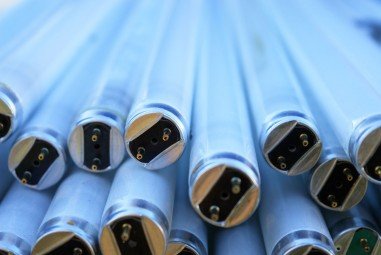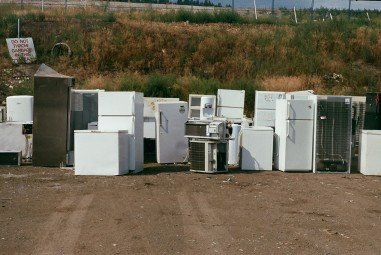Learn more about Hazardous Waste in KT8
Waste is regarded as hazardous when it has properties or contain substances that make it corrosive, carcinogenic, ecotoxic, flammable, harmful, irritant, infectious, mutagenic, toxic, or an oxidizing agent.
In KT8 1,689 tonnes of hazardous waste is produced in KT8 annually which shows how important it is to collect and dispose of the hazardous waste individually as collectively it adds up to a significant amount.. Hazardous waste is a waste stream that has the potential to be a threat to the publics health or the environment.
In KT8’s workplaces it is used in even the most widely-used stationery; adhesives, printer ink, toner and batteries are regularly used and it is possible that people do not consider them as harmful however all are defined as hazardous waste that could be dangerous to human health and the KT8 environment if not managed in the correct way. Other examples, such as cleaning chemicals and fluorescent light tubes from KT8 offices as well as fridges, and paints must all be dealt with properly through an appropriate hazardous waste management scheme in KT8.
Figures from the Environment Agency show that KT8 produced approximately 1,689 tonnes of hazardous waste from hazardous waste disposals compared to almost 5 million tonnes a year in England. Of the 1,689 tonnes only 36% was recycled.
Hazardous waste collection and disposal is one of the most important things the waste industry must keep on improving.
In KT8 1,689 tonnes of hazardous waste is produced in KT8 annually which shows how important it is to collect and dispose of the hazardous waste individually as collectively it adds up to a significant amount.. Hazardous waste is a waste stream that has the potential to be a threat to the publics health or the environment.
In KT8’s workplaces it is used in even the most widely-used stationery; adhesives, printer ink, toner and batteries are regularly used and it is possible that people do not consider them as harmful however all are defined as hazardous waste that could be dangerous to human health and the KT8 environment if not managed in the correct way. Other examples, such as cleaning chemicals and fluorescent light tubes from KT8 offices as well as fridges, and paints must all be dealt with properly through an appropriate hazardous waste management scheme in KT8.
Figures from the Environment Agency show that KT8 produced approximately 1,689 tonnes of hazardous waste from hazardous waste disposals compared to almost 5 million tonnes a year in England. Of the 1,689 tonnes only 36% was recycled.
Hazardous waste collection and disposal is one of the most important things the waste industry must keep on improving.
























